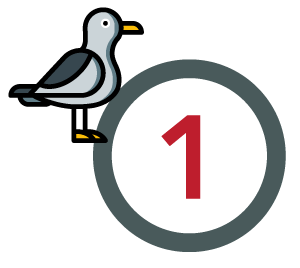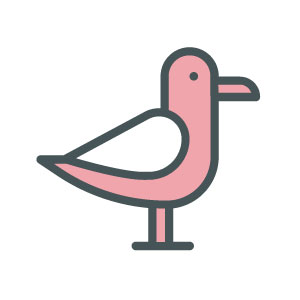Gull Removal Experts
All treatments come with a guarantee and an expert Gull removal specialist.
Same day callouts available today!
Same day callouts available today!
April 28, 2024
Email us to book an appointment
We specialise in
Gull control & removal
The UK is home to 6 species of gull: Great Black-backed Gull (Larus Marinus), Lesser Black-backed Gull (Larus Fuscus), Herring Gull (Larus Argentatus), Black-headed Gull (Larus Ridibundus), Common Gull (Larus Canus) and Kittiwake (Rissa Tridactyla).
Do you have a problem with Gulls?

Step 1
You can either call us on
0800 592011 or fill out our simple contact form.

Step 2
One of our pest control experts will call you or reply via email to arrange the appointment instantly.

Step 3
ASW'S technician will carry out the required visits and we will be at the end of the phone if you need us.
Information
(Laridae)
As with all birds, they are protected by the Wildlife & Countryside Act 1981 though can be controlled under certain circumstances.
They are known scavengers at domestic and commercial sites looking for food as well as flocking in great numbers and waste handling and landfill sites. They are a reasonably large bird and have been known to be aggressive towards people when looking for food.

Appearance
- Great black-backed gulls – 64-78cm in length, wings are black with white tips, beak is yellow with a red spot, legs are pink
- Lesser black-backed gulls – 52-64cm in length, wings are dark grey with black tips, beak is yellow with a red spot, legs are yellow
- Herring gull – 55-64cm in length, wings are a silver grey with white spots and black tips, beak is yellow with a red spot, legs are pink
- Black-headed gull – 34-37cm in length, wings are pale grey above with white flecks on tips and black underneath, beak is red with a black tip, legs are red
- Common gull – 40-44cm in length, wings are medium grey, beak is a green-yellow, legs are green-yellow
- Kittiwake – 38-40cm in length, wings are pale grey with black tips, beak is yellow, legs are brown-black
Habits
- Often seen in large flocks both inland and coastal
- Favour high up nesting sites on building roofs and warehouses etc
- Can roost in many thousands on inland water sources such as reservoirs
Life Cycle
- Start to breed from 5 years old
- Eggs laid in April or May, up to three eggs laid at 2 or 3 day intervals
- Usually only 1 successful clutch per season
- Life expectancy of up to 25 years

"Very professional and dealt with the problem efficiently and quickly. Very knowledgeable on his subject and gave lots of advice on how to solve the problem, not just deal with what was happening at the time. Would definitely use again."
Stephen Collom
"I have asked ASW post control over to my house on a number of occasions now to deal with rats and ants, and have always found the service to be responsive, professional and extremely effective. I would recommend this service to anyone as excellent."
Clare Biss
"Responsive, efficient and friendly service. Barry who came round was a bit of a legend - great sense of humour, knowledgeable, experienced and really friendly, made the whole visit very entertaining too! He's even coming back in 10-14 days to check on progress. Great value for money . - highly recommended."
Mark McG
"As a rural church with a major wasp issue, it was most refreshing to have such a prompt, professional and efficient service provided by ASW. An excellent service which effectively sorted out the problem. Would definitely strongly recommend aswpestcontrol. Our gratitude to them for their service."
Peter Sharland
Previous
Next





